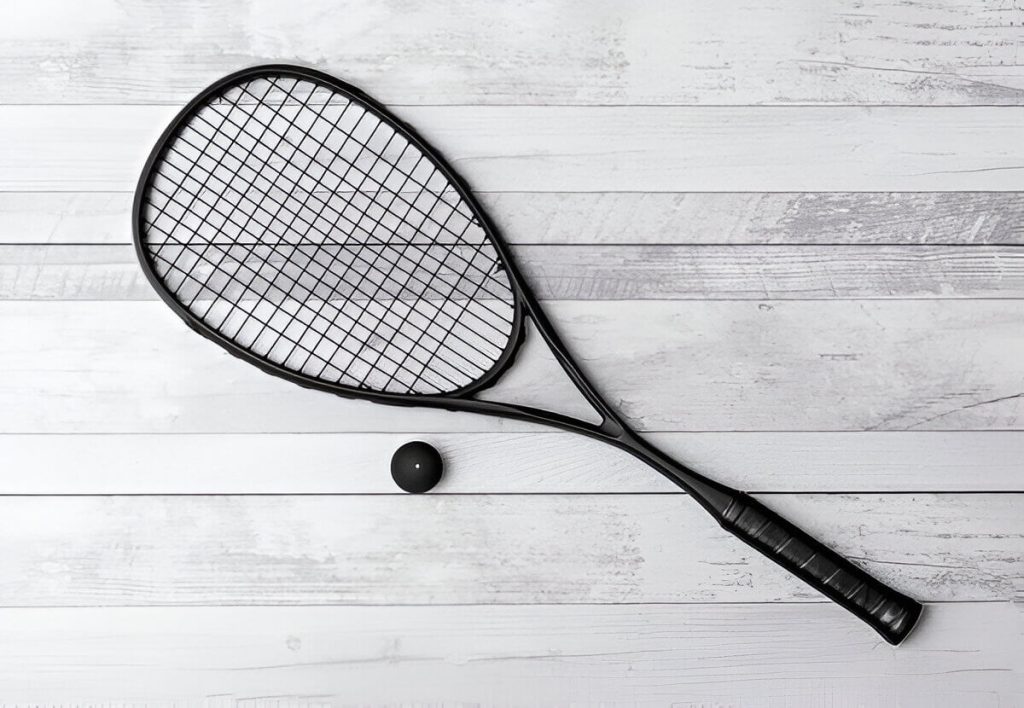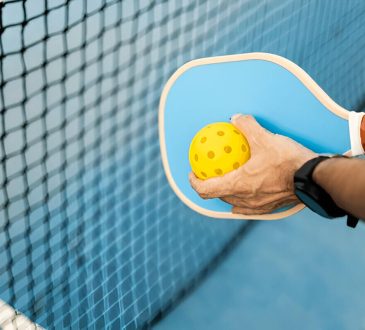
Racquetball is an exhilarating sport combining agility, strategy, and precision. Whether you’re a beginner or refining your skills, understanding racquetball basics is essential. This guide covers selecting equipment, basic rules, techniques, and avoiding common mistakes. With tips on improving your game and ensuring safety through proper warm-ups, you’ll be ready to enjoy this dynamic sport while honing your competitive edge. Let’s explore how to play racquetball with confidence and skill.
Understanding the Basics of Racquetball
Racquetball is an exciting and fast-paced sport that offers a great workout while being incredibly fun to play. For those new to the game, understanding the basics of racquetball is crucial for getting started on the right foot. At its core, racquetball is played with a hollow rubber ball in an indoor or outdoor court, where players use a racquet to serve and return the ball against the walls.
A key aspect of racquetball introduction involves familiarizing yourself with the court layout. The standard court measures 40 feet long, 20 feet wide, and 20 feet high, featuring front and back walls as well as side walls that are integral to gameplay. The objective is simple: hit the ball so your opponent cannot return it before it bounces twice.
Beginner racquetball tips often emphasize mastering basic strokes such as forehand and backhand swings. Additionally, learning how to position yourself correctly on the court will help you anticipate your opponent’s moves and improve your reaction time. It’s also important for beginners to focus on their grip; holding the racquet comfortably yet firmly can significantly impact control over shots.
Starting racquetball requires minimal equipment: a good-quality racket, proper eyewear for safety, non-marking shoes suitable for indoor courts, and comfortable athletic wear. As you progress in skill level, investing in lessons or joining local leagues can further enhance your understanding of strategies and refine your technique.
By grasping these fundamental aspects of racquetball basics, newcomers can quickly gain confidence in their abilities and enjoy all that this dynamic sport has to offer.
Essential Equipment You Need to Start Playing Racquetball

If you’re eager to dive into the fast-paced world of racquetball, having the right equipment is crucial to getting started on the right foot. The essential racquetball gear you’ll need includes a few key items that ensure both performance and safety on the court.
First and foremost, selecting suitable racquets and balls for beginners is vital. As a beginner, you might want to opt for a lightweight racquet with a larger head size. This combination helps improve your control over shots while providing ample power, making it easier to learn the basics of the game. Additionally, beginner-friendly balls are slightly slower and have more bounce, which can help you get accustomed to the game’s pace.
Equally important is protective eyewear for racquetball. Given that racquetball involves high-speed rallies in an enclosed space, eye protection is non-negotiable. Look for eyewear specifically designed for racquet sports; these typically feature shatterproof lenses and a snug fit to prevent them from slipping during play.
By equipping yourself with these essential items (beginner-friendly racquets and balls along with reliable protective eyewear) you’ll be well-prepared to enjoy your time on the court safely and effectively as you hone your skills in this exhilarating sport.
Racquetball Rules Explained
Racquetball is an exciting, fast-paced sport that combines elements of tennis and squash, making it a unique challenge for new players. Understanding the official racquetball rules is essential for anyone looking to enjoy the game fully and improve their skills on the court. Here’s a breakdown of some fundamental rules every beginner should know.
First, let’s discuss scoring in racquetball. Matches are typically played in either two games to 15 points or three games with the first two to 15 points and a tiebreaker to 11 points if necessary. To win a point, you must be serving; if you lose a rally while serving, your opponent gains the serve rather than a point.
The rules of play in racquetball matches revolve around serving and returning shots within the confines of the court. A proper serve involves standing in the service zone and hitting the ball directly onto the front wall so it rebounds past the short line without touching any other surfaces first. The receiver must allow it to bounce once before returning it by hitting it against any wall combination as long as it reaches the front wall without bouncing twice on their side.
Understanding these basic principles will help new players navigate their initial games with confidence and adhere to official racquetball rules seamlessly. As players become more accustomed to these guidelines, they can focus on refining their techniques and strategies for competitive play.
Mastering Basic Racquetball Techniques and Strokes
Mastering the fundamental techniques and strokes in racquetball is essential for both beginners and seasoned players looking to improve their game. Understanding the basic strokes, such as forehand and backhand shots, forms the foundation of effective play.
When it comes to racquet swing techniques, ensuring a proper grip is your starting point. A correct grip allows for better control and power during swings. For forehand shots, position your body sideways with your non-dominant shoulder facing the front wall. As you swing, shift your weight from your back foot to your front foot while keeping your eye on the ball. This technique helps generate power and precision.
Backhand shots require a slightly different approach. Start by turning so that your dominant shoulder faces the front wall. Use a similar weight transfer as with forehands, but ensure that you maintain a firm wrist to guide the ball accurately across the court.
Training these basic strokes regularly will enhance muscle memory and consistency in play. Incorporating drills focused on these techniques can significantly improve both offensive and defensive strategies during matches. By dedicating time to mastering these foundational skills, you’ll set yourself up for success on the court, making each game more enjoyable and competitive.
Tactical Tips for Improving Your Game on the Court
When it comes to elevating your performance on the racquetball court, understanding and implementing effective strategies can make all the difference. One key aspect is improving your game strategies, which involves not just playing harder but playing smarter. Begin by analyzing your opponent’s weaknesses and tailoring your shots to exploit them. This might mean varying your serves or placing shots in areas that force them into uncomfortable positions.
Court positioning tips are equally crucial for maintaining an edge during a match. Always aim to return to the center court after each shot, as this position allows you maximum reach and control over the entire court. By staying central, you can react quickly to any direction the ball might take.
Defensive techniques in racquetball also play a significant role in keeping you competitive. Focus on maintaining a solid stance with knees slightly bent, allowing for quick lateral movements. Practice anticipating where the ball will go based on your opponent’s body language and racket position; this foresight can significantly enhance your defensive play.
The Importance of Warm-ups and Stretching Before a Game
Before stepping onto the field, court, or track, athletes understand the crucial role that warm-up exercises and stretching routines play in enhancing performance and preventing injuries. Engaging in a proper warm-up is not just about getting the body moving; it prepares both the mind and muscles for the physical demands of sports.
Warm-up exercises for players typically involve activities that gradually increase heart rate and circulation, such as jogging or dynamic drills. This process helps to raise muscle temperature and improve flexibility, which can significantly reduce the risk of strains or sprains during intense gameplay. Dynamic movements like high knees, butt kicks, and arm circles are particularly effective in preparing major muscle groups.
Stretching routines for athletes complement these warm-ups by focusing on flexibility and range of motion. Incorporating both static stretches (where a stretch is held for 15-30 seconds) and dynamic stretches ensures that muscles are lengthened safely without overextending them before they are fully active. Stretching not only aids in preventing injuries while playing sports but also contributes to better posture and coordination.
Ultimately, dedicating time to thorough warm-up exercises and stretching routines is essential for any athlete looking to perform at their best while minimizing injury risks. These preparatory steps lay a solid foundation for both immediate performance benefits and long-term athletic health.
Troubleshooting Common Beginner Mistakes in Racquetball and How to Avoid Them
Racquetball is an exhilarating sport that combines agility, strategy, and precision. However, beginners often encounter common mistakes that can hinder their progress and enjoyment of the game. Understanding these pitfalls and learning how to avoid them can significantly improve your performance on the court.
One frequent error is improper grip technique. Many novices hold the racquet too tightly or incorrectly, leading to reduced control and power during play. To avoid this, ensure you maintain a relaxed grip with your fingers wrapped around the handle comfortably. This allows for greater flexibility in wrist movement and enhances shot accuracy.
Another prevalent mistake involves footwork and positioning. Beginners might find themselves flat-footed or out of position when attempting to return a shot, which can result in missed opportunities or poor returns. To counteract this, practice staying on the balls of your feet for better mobility and anticipate where the ball will land to position yourself optimally.
Additionally, focusing solely on power rather than strategy is a common misstep in racquetball. While powerful shots are important, relying exclusively on them can be counterproductive if not paired with strategic placement of shots. Work on developing a mix of power and precision by aiming for specific areas of the court that force your opponent into difficult positions.
Neglecting proper warm-up routines is another error that beginners often make when playing sports games like racquetball. Skipping warm-ups increases the risk of injury and impacts performance negatively. Incorporate dynamic stretches and light cardio exercises into your pre-game routine to prepare your muscles for action.
By addressing these beginner errors in racket games solutions such as grip adjustment, improved footwork, strategic play development, and consistent warm-ups can drastically enhance your racquetball experience while setting you up for success as you advance in skill level.
Take Your First Step into the Exciting World of Racquetball Today!
Racquetball is more than just a sport; it’s an exhilarating experience that combines physical fitness, strategic thinking, and social interaction. As you consider diving into this dynamic game, remember that the first step is often the most exciting one. Whether you’re looking to improve your cardiovascular health, enhance your agility, or simply find a new hobby to enjoy with friends and family, racquetball offers something for everyone.
To get started, all you need is access to a court and some basic equipment, a racquet, ball, and protective eyewear. Many local gyms and community centers offer facilities where you can practice and play. Additionally, joining a beginner’s class or finding a racquetball partner can be beneficial in learning the ropes quickly.
As you embark on this new journey, keep in mind that racquetball is not just about competition; it’s also about personal growth and enjoyment. The skills you develop on the court, such as quick decision-making and improved reflexes, can translate into other areas of life as well.
So why wait? Take your first step into the exciting world of racquetball today! Embrace the challenge, relish the thrill of each match, and discover how this engaging sport can enrich your life both physically and mentally.
